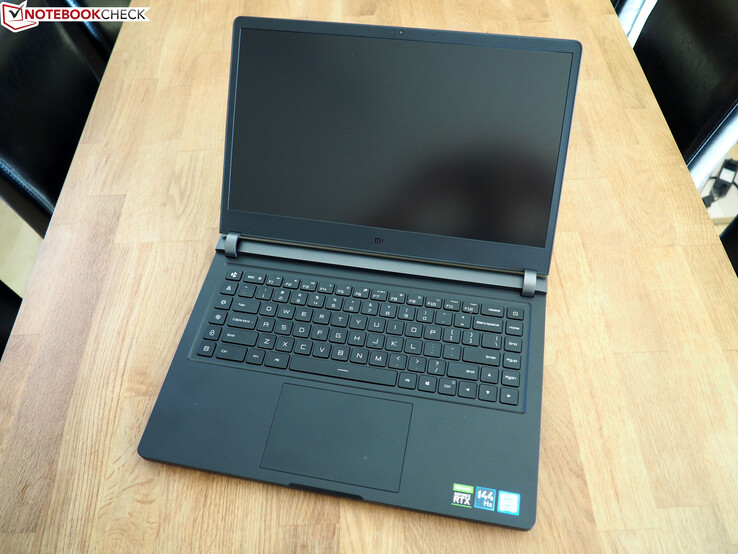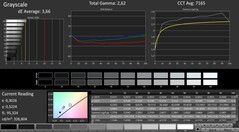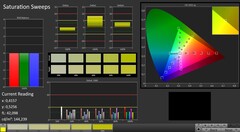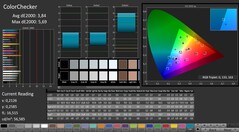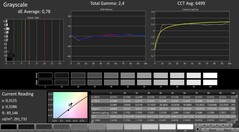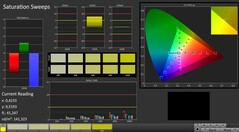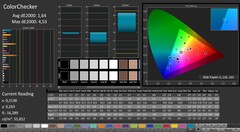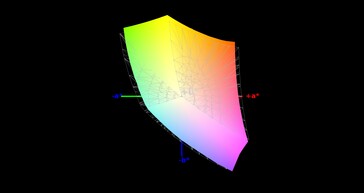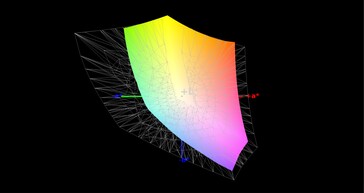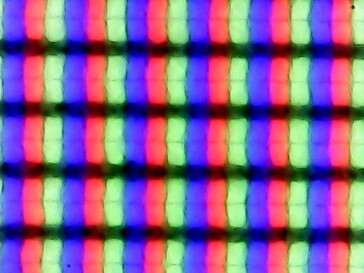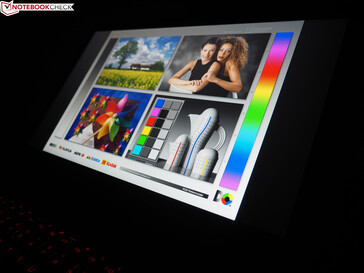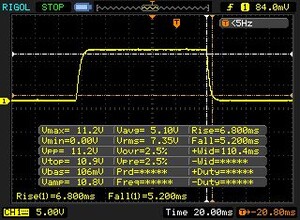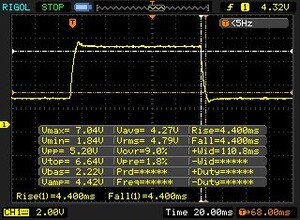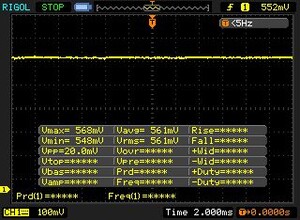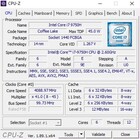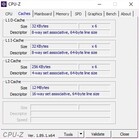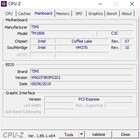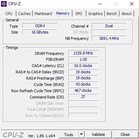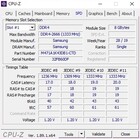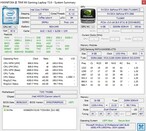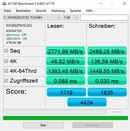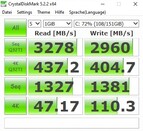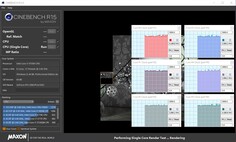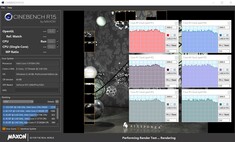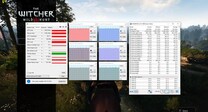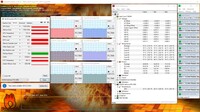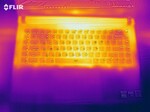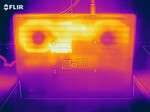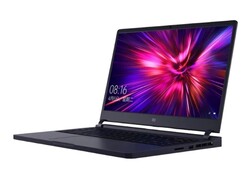Xiaomi Mi Gaming Laptop 2019 Review: Return of the Exotic

As previously reported three different models of the 2019 edition of Xiaomi’s Mi Gaming Laptop will be available. A base model equipped with a Core i5-9300H with 8 GB of RAM, a mid-range model based on the Core i7-9750H with 16 GB of RAM, and last but not least a flagship model equipped with a GeForce RTX 2060 instead of a GeForce GTX 1660 Ti. The latter might not be that much slower than the former, but it lacks its raytracing capabilities. All units are equipped with a 144 Hz IPS FHD and a 512 GB NVMe SSD.
As with its predecessor Xiaomi’s exclusive target audience for the Mi Gaming Laptop are Asian markets, which is why it's almost impossible to tell you how much exactly the device is going to cost. By default, it ships with a Chinese version of Windows. However, some retailers offer an English Windows 10 at a premium.
Its main competitors are other 15-inch notebooks with Core i7-9750H and GeForce RTX 2060, such as the MSI GL65 9SEK, Lenovo Legion Y540-15IRH, Asus Strix GL531GV, or Acer ConceptD 7.
Rating | Date | Model | Weight | Height | Size | Resolution | Price |
|---|---|---|---|---|---|---|---|
| 82.3 % v7 (old) | 11 / 2019 | Xiaomi Mi Gaming Laptop 2019 i7-9750H, GeForce RTX 2060 Mobile | 2.6 kg | 21 mm | 15.60" | 1920x1080 | |
| 80.8 % v7 (old) | 10 / 2019 | MSI GL65 9SEK i7-9750H, GeForce RTX 2060 Mobile | 2.3 kg | 27.5 mm | 15.60" | 1920x1080 | |
| 85.7 % v6 (old) | 08 / 2019 | Lenovo Legion Y540-15IRH i7-9750H, GeForce RTX 2060 Mobile | 2.3 kg | 26 mm | 15.60" | 1920x1080 | |
| 84.4 % v7 (old) | 08 / 2019 | Asus Strix GL531GV-PB74 i7-9750H, GeForce RTX 2060 Mobile | 2.4 kg | 25.9 mm | 15.60" | 1920x1080 | |
| 87.3 % v7 (old) | 11 / 2019 | Acer ConceptD 7 CN715-71-743N i7-9750H, GeForce RTX 2060 Mobile | 2.2 kg | 17.9 mm | 15.60" | 3840x2160 |
Since Xiaomi has left the case mostly unmodified, except for the unfortunate omission of a previously available USB-C port, we are not going to cover case, connectivity, and input devices in great depth as part of this review. Instead, we would like to refer you to our review of the 2018 model.
| SD Card Reader | |
| average JPG Copy Test (av. of 3 runs) | |
| Average of class Gaming (20 - 210, n=66, last 2 years) | |
| Xiaomi Mi Gaming Laptop 2019 (Toshiba Exceria Pro SDXC 64 GB UHS-II) | |
| maximum AS SSD Seq Read Test (1GB) | |
| Average of class Gaming (25.8 - 261, n=63, last 2 years) | |
| Xiaomi Mi Gaming Laptop 2019 (Toshiba Exceria Pro SDXC 64 GB UHS-II) | |
| Networking | |
| iperf3 transmit AX12 | |
| Xiaomi Mi Gaming Laptop 2019 | |
| iperf3 receive AX12 | |
| Xiaomi Mi Gaming Laptop 2019 | |
Display
The FHD display has been upgraded significantly. Gone is the previously installed 60 Hz panel. Instead, the 2019 model features a blazingly fast 144 Hz display.
| |||||||||||||||||||||||||
Brightness Distribution: 87 %
Center on Battery: 279 cd/m²
Contrast: 1374:1 (Black: 0.23 cd/m²)
ΔE ColorChecker Calman: 3.84 | ∀{0.5-29.43 Ø4.78}
calibrated: 1.64
ΔE Greyscale Calman: 3.66 | ∀{0.09-98 Ø5}
92% sRGB (Argyll 1.6.3 3D)
60% AdobeRGB 1998 (Argyll 1.6.3 3D)
66.4% AdobeRGB 1998 (Argyll 3D)
92.1% sRGB (Argyll 3D)
65.2% Display P3 (Argyll 3D)
Gamma: 2.62
CCT: 7165 K
| Xiaomi Mi Gaming Laptop 2019 NV156FHM-N4G (BOE0867), IPS, 1920x1080, 15.6" | MSI GL65 9SEK AU Optronics B156HAN13.0, IPS, 1920x1080, 15.6" | Lenovo Legion Y540-15IRH BOE NV156FHM-N4G (BOE084D), IPS, 1920x1080, 15.6" | Asus Strix GL531GV-PB74 Panda LM156LF-GL02, IPS, 1920x1080, 15.6" | Acer ConceptD 7 CN715-71-743N AU Optronics AUO31EB, IPS, 3840x2160, 15.6" | |
|---|---|---|---|---|---|
| Display | -42% | -1% | -37% | 30% | |
| Display P3 Coverage (%) | 65.2 | 36.63 -44% | 64.5 -1% | 40.13 -38% | 85.7 31% |
| sRGB Coverage (%) | 92.1 | 55 -40% | 91.6 -1% | 60.3 -35% | 100 9% |
| AdobeRGB 1998 Coverage (%) | 66.4 | 37.85 -43% | 65.9 -1% | 41.48 -38% | 99 49% |
| Response Times | -175% | 9% | -154% | -304% | |
| Response Time Grey 50% / Grey 80% * (ms) | 8.8 ? | 26.4 ? -200% | 8.8 ? -0% | 26 ? -195% | 49 ? -457% |
| Response Time Black / White * (ms) | 12 ? | 30 ? -150% | 10 ? 17% | 25.6 ? -113% | 30 ? -150% |
| PWM Frequency (Hz) | |||||
| Screen | -49% | -8% | -65% | 28% | |
| Brightness middle (cd/m²) | 316 | 277.3 -12% | 284 -10% | 290.1 -8% | 365 16% |
| Brightness (cd/m²) | 295 | 256 -13% | 277 -6% | 274 -7% | 357 21% |
| Brightness Distribution (%) | 87 | 86 -1% | 87 0% | 86 -1% | 84 -3% |
| Black Level * (cd/m²) | 0.23 | 0.2 13% | 0.3 -30% | 0.54 -135% | 0.275 -20% |
| Contrast (:1) | 1374 | 1387 1% | 947 -31% | 537 -61% | 1327 -3% |
| Colorchecker dE 2000 * | 3.84 | 5.25 -37% | 3.53 8% | 5.16 -34% | 0.99 74% |
| Colorchecker dE 2000 max. * | 5.69 | 19.43 -241% | 6.11 -7% | 18.09 -218% | 1.89 67% |
| Colorchecker dE 2000 calibrated * | 1.64 | 4.39 -168% | 1.81 -10% | 4.35 -165% | 1.01 38% |
| Greyscale dE 2000 * | 3.66 | 3.5 4% | 3.56 3% | 4.4 -20% | 1.29 65% |
| Gamma | 2.62 84% | 2.1 105% | 2.47 89% | 2.1 105% | 2.2 100% |
| CCT | 7165 91% | 6895 94% | 7257 90% | 7362 88% | 6548 99% |
| Color Space (Percent of AdobeRGB 1998) (%) | 60 | 35 -42% | 59 -2% | 38.1 -36% | 88 47% |
| Color Space (Percent of sRGB) (%) | 92 | 55 -40% | 91 -1% | 60 -35% | 100 9% |
| Total Average (Program / Settings) | -89% /
-63% | 0% /
-5% | -85% /
-71% | -82% /
-13% |
* ... smaller is better
Our measurements indicate significantly reduced response times that decreased from around 41.6-53.2 ms to just 8.8-12 ms. This should make for an image free of ghosting and artifacts even when playing fast-paced shooters. Unfortunately, Xiaomi has opted not to include support for G-Sync, most likely a cost-cutting measure (re: license costs). Instead, the Mi Gaming Laptop supports Optimus in order to maximize battery life.
Display Response Times
| ↔ Response Time Black to White | ||
|---|---|---|
| 12 ms ... rise ↗ and fall ↘ combined | ↗ 6.8 ms rise | |
| ↘ 5.2 ms fall | ||
| The screen shows good response rates in our tests, but may be too slow for competitive gamers. In comparison, all tested devices range from 0.1 (minimum) to 240 (maximum) ms. » 30 % of all devices are better. This means that the measured response time is better than the average of all tested devices (20.2 ms). | ||
| ↔ Response Time 50% Grey to 80% Grey | ||
| 8.8 ms ... rise ↗ and fall ↘ combined | ↗ 4.4 ms rise | |
| ↘ 4.4 ms fall | ||
| The screen shows fast response rates in our tests and should be suited for gaming. In comparison, all tested devices range from 0.165 (minimum) to 636 (maximum) ms. » 21 % of all devices are better. This means that the measured response time is better than the average of all tested devices (31.6 ms). | ||
Screen Flickering / PWM (Pulse-Width Modulation)
| Screen flickering / PWM not detected | |||
In comparison: 53 % of all tested devices do not use PWM to dim the display. If PWM was detected, an average of 8108 (minimum: 5 - maximum: 343500) Hz was measured. | |||
Performance
The flagship SKU can definitely be considered a high-end gaming notebook. A hexa-core CPU combined with a GeForce RTX 2060, a 512 GB SSD, and 16 GB of RAM should offer more than enough gaming and processing oomph for many years to come.
Processor
It runs at a base clock speed of 2.6 GHz and can turbo boost up to 4.5 GHz. Unfortunately, the Mi Gaming Laptop is incapable of fully utilizing the CPU’s turbo boost potential. In single-threaded load the CPU runs at 4.0 to 4.3 GHz while multi-core turbo boost is limited to just 3.3 to 3.8 GHz.
Like most other gaming laptops performance drops by around 10 % in our CineBench loop after the first iteration. Overall, the Core i7-9750H performed as expected.
System Performance
System performance was also at a level expected of this system. With a score of 5,681 the Mi Gaming Laptop sits right in between its competitors albeit the differences are marginal. Subjectively, the device booted up very quickly and felt fast and snappy.
Storage Devices
NVMe SSD is a staple of pretty much every 2019 high end notebook, and Xiaomi opted for a 512 GB NVMe SSD by Toshiba. Sequential read and write speeds top out at a superb 3,000 MB/s in Crystal Disk Mark, and the M.2 SSD was also very fast in random access scenarios. Given that the Mi Gaming Laptop features a free secondary M.2 slot as well as a free 2.5-inch slot the upgrade options are plentiful.
| Xiaomi Mi Gaming Laptop 2019 Toshiba XG6 KXG60ZNV512G | MSI GL65 9SEK WDC PC SN520 SDAPNUW-512G | Lenovo Legion Y540-15IRH Samsung PM981a MZVLB1T0HBLR | Asus Strix GL531GV-PB74 Intel SSD 660p SSDPEKNW512G8 | Acer ConceptD 7 CN715-71-743N WDC PC SN720 SDAPNTW-512G | |
|---|---|---|---|---|---|
| CrystalDiskMark 5.2 / 6 | -3% | 10% | -16% | 14% | |
| Write 4K (MB/s) | 110.3 | 150.2 36% | 131.7 19% | 121.9 11% | 109 -1% |
| Read 4K (MB/s) | 47.17 | 43.46 -8% | 48.06 2% | 53.6 14% | 41.33 -12% |
| Write Seq (MB/s) | 1381 | 1412 2% | 1234 -11% | 967 -30% | 2535 84% |
| Read Seq (MB/s) | 1327 | 1340 1% | 973 -27% | 1461 10% | 1538 16% |
| Write 4K Q32T1 (MB/s) | 404.7 | 482.2 19% | 576 42% | 431.4 7% | 396.6 -2% |
| Read 4K Q32T1 (MB/s) | 437.2 | 535 22% | 655 50% | 337.3 -23% | 603 38% |
| Write Seq Q32T1 (MB/s) | 2960 | 1454 -51% | 3012 2% | 972 -67% | 2542 -14% |
| Read Seq Q32T1 (MB/s) | 3278 | 1744 -47% | 3481 6% | 1727 -47% | 3324 1% |
GPU Performance
The GeForce RTX 2060 is Nvidia’s most affordable raytracing-capable laptop GPU. This particular DirectX 12 chip is based on the Turing architecture and features 1,920 shader units with access to 6 GB of GDDR6 video RAM.
| 3DMark 11 Performance | 18262 points | |
| 3DMark Cloud Gate Standard Score | 35196 points | |
| 3DMark Fire Strike Score | 15004 points | |
| 3DMark Time Spy Score | 6209 points | |
Help | ||
The Mi Gaming Laptop performed very well in our GPU benchmarks. It scored first place within our test group in 3DMark 11 and 3DMark 13, which attests to a good turbo-boost utilization.
We were able to verify the latter during our 60-minute long "The Witcher 3" loop (1920x1080, Ultra), and the resulting core frequency of 1,500 MHz is much higher than the GPU’s base frequency of just 1,110 MHz. We did not notice any sudden drops in performance.
Gaming Performance
As long as you restrict yourself to gaming in FHD the GeForce RTX 2060 is more than capable of running all current games smoothly in maximum details. Only extremely taxing games, such as Anno1800 or Odyssey, might drop to less than 60 FPS on average.
| The Witcher 3 | |
| 1920x1080 High Graphics & Postprocessing (Nvidia HairWorks Off) | |
| Average of class Gaming (110 - 424, n=35, last 2 years) | |
| MSI GL65 9SEK | |
| Asus Strix GL531GV-PB74 | |
| Xiaomi Mi Gaming Laptop 2019 | |
| Acer ConceptD 7 CN715-71-743N | |
| 1920x1080 Ultra Graphics & Postprocessing (HBAO+) | |
| Average of class Gaming (18.4 - 240, n=55, last 2 years) | |
| Asus Strix GL531GV-PB74 | |
| Xiaomi Mi Gaming Laptop 2019 | |
| MSI GL65 9SEK | |
| Acer ConceptD 7 CN715-71-743N | |
| Lenovo Legion Y540-15IRH | |
In most cases you should also be fine with running games in 2560x1440. However, 4K gaming in 3820x2160 is most likely going to be too demanding for this RTX 2060.
| low | med. | high | ultra | QHD | 4K | |
|---|---|---|---|---|---|---|
| The Witcher 3 (2015) | 113 | 60.6 | ||||
| Fortnite (2018) | 130 | 107 | ||||
| Kingdom Come: Deliverance (2018) | 87.4 | 62.3 | ||||
| Assassin´s Creed Odyssey (2018) | 68 | 50 | ||||
| Battlefield V (2018) | 106 | 103 | ||||
| Darksiders III (2018) | 106 | 93.4 | ||||
| Just Cause 4 (2018) | 89.2 | 82.1 | ||||
| Dirt Rally 2.0 (2019) | 127 | 74 | ||||
| Anno 1800 (2019) | 67.1 | 37.3 | ||||
| Need for Speed Heat (2019) | 99.6 | 93.2 | 87.7 | 74.9 | 54.4 | 29.6 |
| Star Wars Jedi Fallen Order (2019) | 99.6 | 93.8 | 87.6 | 61.9 | 30.1 |
Emissions
System Noise
System noise is by far the Mi Gaming Laptop’s biggest shortcoming. Just like its predecessor the 2019 model turned out to be extremely loud under load. An average of 59 dB(A) while running "The Witcher 3" is beyond annoying and practically forces users to wear headphones. At an average of 44 to 51 dB(A) its competitors were significantly quieter.
We would also like to see some further optimizations in low load scenarios, such as office tasks, video, and browsing the web. The fans remain unobtrusive at 31-32 dB(A) most of the time, but tend to randomly ramp up to 40 dB(A). This is most likely going to be a major nuisance for many users.
Noise level
| Idle |
| 31 / 32 / 42 dB(A) |
| Load |
| 52 / 59 dB(A) |
 | ||
30 dB silent 40 dB(A) audible 50 dB(A) loud |
||
min: | ||
| Xiaomi Mi Gaming Laptop 2019 i7-9750H, GeForce RTX 2060 Mobile | MSI GL65 9SEK i7-9750H, GeForce RTX 2060 Mobile | Lenovo Legion Y540-15IRH i7-9750H, GeForce RTX 2060 Mobile | Asus Strix GL531GV-PB74 i7-9750H, GeForce RTX 2060 Mobile | Acer ConceptD 7 CN715-71-743N i7-9750H, GeForce RTX 2060 Mobile | Average of class Gaming | |
|---|---|---|---|---|---|---|
| Noise | 7% | 10% | 11% | 14% | 17% | |
| off / environment * (dB) | 30 | 28.1 6% | 30 -0% | 28.2 6% | 30.4 -1% | 24.1 ? 20% |
| Idle Minimum * (dB) | 31 | 31.4 -1% | 30 3% | 28.8 7% | 30.6 1% | 26.1 ? 16% |
| Idle Average * (dB) | 32 | 31.5 2% | 32 -0% | 31.4 2% | 30.6 4% | 27.7 ? 13% |
| Idle Maximum * (dB) | 42 | 33.5 20% | 34 19% | 33.3 21% | 30.6 27% | 30.2 ? 28% |
| Load Average * (dB) | 52 | 49.3 5% | 44 15% | 46.2 11% | 44 15% | 43 ? 17% |
| Witcher 3 ultra * (dB) | 59 | 51.3 13% | 48 19% | 50.5 14% | 43.9 26% | |
| Load Maximum * (dB) | 59 | 58 2% | 52 12% | 51.3 13% | 44.2 25% | 53.8 ? 9% |
* ... smaller is better
Temperature
Considering its noise emissions, the laptops surface temperatures were neither here nor there. A maximum of 51 °C (~124 °F) at the top and 57 °C (~135 °F) at the bottom place the device somewhere in the middle of the pack. At just 23 to 27 °C (~73 to 81 °F) idle temperatures were lower than on average.
The fast spinning fans had a positive impact on internal temperatures as well. For example, the GeForce RTX 2060 maxed out at just 70 °C (~158 °F) under load and Intel’s Core i7-9750H peaked at a slightly higher yet still more than acceptable 80 °C (~176 °F) in our stress test running Prime95 and FurMark simultaneously. We should note that running our stress test resulted in a temporarily disabled CPU turbo boost.
(-) The maximum temperature on the upper side is 51 °C / 124 F, compared to the average of 40.4 °C / 105 F, ranging from 21.2 to 68.8 °C for the class Gaming.
(-) The bottom heats up to a maximum of 57 °C / 135 F, compared to the average of 43.3 °C / 110 F
(+) In idle usage, the average temperature for the upper side is 24.7 °C / 76 F, compared to the device average of 33.9 °C / 93 F.
(-) Playing The Witcher 3, the average temperature for the upper side is 40.7 °C / 105 F, compared to the device average of 33.9 °C / 93 F.
(+) The palmrests and touchpad are cooler than skin temperature with a maximum of 30 °C / 86 F and are therefore cool to the touch.
(±) The average temperature of the palmrest area of similar devices was 28.9 °C / 84 F (-1.1 °C / -2 F).
| Xiaomi Mi Gaming Laptop 2019 i7-9750H, GeForce RTX 2060 Mobile | MSI GL65 9SEK i7-9750H, GeForce RTX 2060 Mobile | Lenovo Legion Y540-15IRH i7-9750H, GeForce RTX 2060 Mobile | Asus Strix GL531GV-PB74 i7-9750H, GeForce RTX 2060 Mobile | Acer ConceptD 7 CN715-71-743N i7-9750H, GeForce RTX 2060 Mobile | Average of class Gaming | |
|---|---|---|---|---|---|---|
| Heat | -25% | -25% | -5% | 1% | -7% | |
| Maximum Upper Side * (°C) | 51 | 49 4% | 47 8% | 43.4 15% | 44.6 13% | 45.6 ? 11% |
| Maximum Bottom * (°C) | 57 | 54.2 5% | 60 -5% | 49.2 14% | 57.2 -0% | 48.3 ? 15% |
| Idle Upper Side * (°C) | 27 | 40.4 -50% | 37 -37% | 30.8 -14% | 27.4 -1% | 31.4 ? -16% |
| Idle Bottom * (°C) | 25 | 40 -60% | 41 -64% | 34 -36% | 27.6 -10% | 34.3 ? -37% |
* ... smaller is better
Speakers
Xiaomi Mi Gaming Laptop 2019 audio analysis
(+) | speakers can play relatively loud (89 dB)
Bass 100 - 315 Hz
(-) | nearly no bass - on average 16.9% lower than median
(±) | linearity of bass is average (7.7% delta to prev. frequency)
Mids 400 - 2000 Hz
(+) | balanced mids - only 3.6% away from median
(+) | mids are linear (6.9% delta to prev. frequency)
Highs 2 - 16 kHz
(+) | balanced highs - only 3.9% away from median
(+) | highs are linear (4.8% delta to prev. frequency)
Overall 100 - 16.000 Hz
(±) | linearity of overall sound is average (15% difference to median)
Compared to same class
» 31% of all tested devices in this class were better, 6% similar, 63% worse
» The best had a delta of 6%, average was 18%, worst was 132%
Compared to all devices tested
» 20% of all tested devices were better, 4% similar, 76% worse
» The best had a delta of 4%, average was 24%, worst was 134%
Lenovo Legion Y540-15IRH audio analysis
(+) | speakers can play relatively loud (82 dB)
Bass 100 - 315 Hz
(±) | reduced bass - on average 14.6% lower than median
(±) | linearity of bass is average (14.5% delta to prev. frequency)
Mids 400 - 2000 Hz
(+) | balanced mids - only 3.9% away from median
(+) | mids are linear (3.8% delta to prev. frequency)
Highs 2 - 16 kHz
(+) | balanced highs - only 3% away from median
(+) | highs are linear (6.5% delta to prev. frequency)
Overall 100 - 16.000 Hz
(+) | overall sound is linear (14.3% difference to median)
Compared to same class
» 26% of all tested devices in this class were better, 7% similar, 67% worse
» The best had a delta of 6%, average was 18%, worst was 132%
Compared to all devices tested
» 17% of all tested devices were better, 4% similar, 79% worse
» The best had a delta of 4%, average was 24%, worst was 134%
Energy Management
Power Consumption
Thanks to graphics switching on demand, the 15-inch notebook only consumed around 10 to 20 W when idle, around 100 W in 3D (3DMark 06), and 196 W under maximum load. Using "The Witcher 3" to represent typical gaming load we were able to determine an average gaming power consumption of around 160 W. The power supply is rated at 180 W.
| Off / Standby | |
| Idle | |
| Load |
|
Key:
min: | |
| Xiaomi Mi Gaming Laptop 2019 i7-9750H, GeForce RTX 2060 Mobile | MSI GL65 9SEK i7-9750H, GeForce RTX 2060 Mobile | Lenovo Legion Y540-15IRH i7-9750H, GeForce RTX 2060 Mobile | Asus Strix GL531GV-PB74 i7-9750H, GeForce RTX 2060 Mobile | Acer ConceptD 7 CN715-71-743N i7-9750H, GeForce RTX 2060 Mobile | Average of class Gaming | |
|---|---|---|---|---|---|---|
| Power Consumption | -115% | -25% | -17% | 7% | -32% | |
| Idle Minimum * (Watt) | 10 | 41 -310% | 15 -50% | 10.9 -9% | 7.6 24% | 13.6 ? -36% |
| Idle Average * (Watt) | 13 | 45.3 -248% | 20 -54% | 14.7 -13% | 13.6 -5% | 19.5 ? -50% |
| Idle Maximum * (Watt) | 20 | 47.1 -136% | 33 -65% | 32.4 -62% | 18.2 9% | 26.1 ? -31% |
| Load Average * (Watt) | 100 | 94.9 5% | 88 12% | 121.9 -22% | 102 -2% | 110.9 ? -11% |
| Witcher 3 ultra * (Watt) | 159 | 149.4 6% | 128 19% | 143.5 10% | 144 9% | |
| Load Maximum * (Watt) | 196 | 214.2 -9% | 213 -9% | 209.6 -7% | 183 7% | 262 ? -34% |
* ... smaller is better
Battery Life
Despite support for Nvidia Optimus the Mi Gaming Laptop is not going to break any records due to its comparatively small 55 Wh battery. As expected, it reached around 4.5 hours in our Wi-Fi test (medium brightness) and 6 hours in our idle test (minimum brightness), which is neither particularly good nor particularly bad for a high-end device. Compare this to the Asus Strix GL531GV that ran out of power much sooner at one end of the spectrum, and the Acer ConceptD 7 that ran for almost twice as long at the other. All battery tests considered the Mi Gaming Laptop was roughly on a par with the MSI GL65 9SEK and the Lenovo Legion Y540-15IRH.
| Xiaomi Mi Gaming Laptop 2019 i7-9750H, GeForce RTX 2060 Mobile, 55 Wh | MSI GL65 9SEK i7-9750H, GeForce RTX 2060 Mobile, 51 Wh | Lenovo Legion Y540-15IRH i7-9750H, GeForce RTX 2060 Mobile, 57 Wh | Asus Strix GL531GV-PB74 i7-9750H, GeForce RTX 2060 Mobile, 66 Wh | Acer ConceptD 7 CN715-71-743N i7-9750H, GeForce RTX 2060 Mobile, 84 Wh | Average of class Gaming | |
|---|---|---|---|---|---|---|
| Battery runtime | -6% | -9% | -57% | 105% | 65% | |
| Reader / Idle (h) | 6.2 | 4.4 -29% | 3.9 -37% | 13.7 121% | 9.99 ? 61% | |
| WiFi v1.3 (h) | 4.4 | 3.8 -14% | 3.2 -27% | 1.9 -57% | 8.6 95% | 6.76 ? 54% |
| Load (h) | 0.8 | 1 25% | 1.1 38% | 1.6 100% | 1.435 ? 79% | |
| H.264 (h) | 6.5 | 8.1 ? |
Pros
Cons
Verdict
The pros and cons of Xiaomi’s 2019 edition of the Mi Gaming Laptop are pretty much identical to its predecessor’s.
On the plus side, we have a surprisingly robust high-quality case with its simple design that will fit in pretty much everywhere. We also liked its input devices as they were well-suited for both, office and gaming. The lack of Thunderbolt 3 is compensated by a fast 144 Hz display and a faster card reader.
Its biggest drawbacks are noise emissions, particularly in 3D. Simply put the 15-inch laptop is significantly too loud, something not even the great price-performance ratio can compensate.
Xiaomi Mi Gaming Laptop 2019
- 05/14/2020 v7 (old)
Florian Glaser




